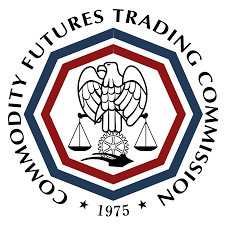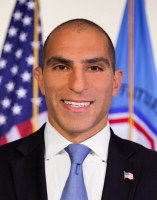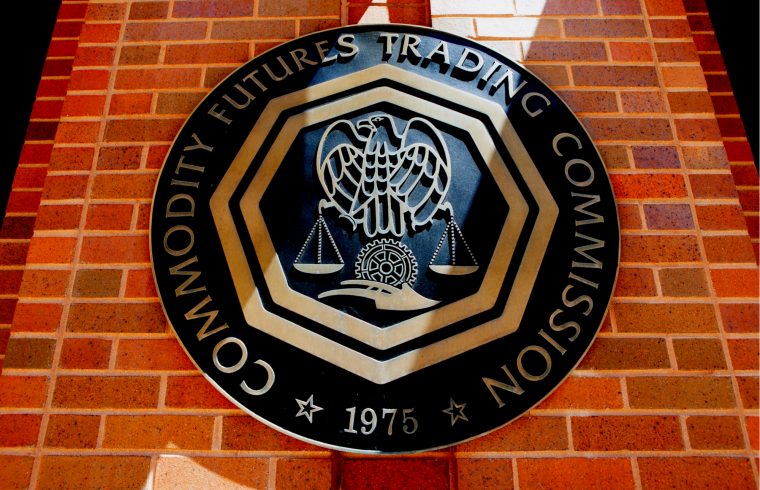 A Commodities Futures Trading Commission (CFTC) Commissioner threw his support behind the swap regulation framework which started in 2010.
A Commodities Futures Trading Commission (CFTC) Commissioner threw his support behind the swap regulation framework which started in 2010.
CFTC Commissioner Dan Berkovitz made a speech at Energy Risk 2019 held in Houston, Texas earlier this week.
During the speech, he noted, “Over the past decade, the regulatory system for our financial and commodity markets has also undergone a remarkable transformation. Following the collapse of global financial markets in September 2009, the G20 convened in Pittsburgh to establish the principles that the nations of the world would follow to safeguard the global financial system. The core objectives established by the G20 leaders included raising bank capital standards, increasing central clearing and exchange trading for standardized derivatives, and fostering fair and transparent competition in our financial markets. Concurrently, the G20 leaders pledged to promote global energy security, the development of clean, sustainable energy supplies, and improved regulatory oversight of the energy markets.

“In 2010, Congress passed the Dodd-Frank Act. This legislation created a new framework to regulate swaps, which had previously been unregulated. Congress directed the CFTC to write rules to decrease risk and increase transparency in the swaps market, including the registration of and business conduct standards for the large swap dealers, mandating that certain standardized swaps be cleared and traded on regulated facilities, and requiring that all swaps be reported to a swap data repository. In addition to broadening its jurisdiction to include swaps, Congress also gave the Commission new tools to prosecute fraud and manipulation.
“As a result of this new framework and the CFTC’s implementing regulations, our financial markets are safer and more resilient than they were in 2008. The mandates for swap dealer registration and swap clearing, trading, and reporting have been applied to large segments of the swaps market. Today, 105 swap dealers and 23 swap execution facilities are now registered with the Commission. Almost 89% of interest rate swaps and 96% of broad index credit default swaps are cleared through a central clearinghouse. Nearly 98% of all swap transactions involve at least one registered swap dealer.”
The framework which Berkovitz referred to started at the G20 Conference in 2010 held in Pittsburgh; at that conference- which brings the world’s twenty biggest economies- a new framework for trading swaps was agreed upon.
This new framework moved swaps, which trade over the counter, and provided much more oversight, including the introduction of clearinghouses.
Swaps, and particularly credit default swaps, were blamed for contributing to the 2008 financial crisis; credit default swaps are supposed to offload credit default risk by moving baskets of assets which banks have gotten too heavy in to other banks.
In the run up to the 2008 financial crisis, they were treated far more like a casino than a hedging tool.
Berkovitz, in the speech, also said derivatives “do not always evolve naturally within a given industry.”
He pointed to oil markets, once dominated by John D. Rockefeller, as an example; Rockefeller was famous for not only turning oil into an industry, but for being no fan of markets, exchanges, and competition.
At its height, his company Standard Oil controlled approximately 90% of all oil production in the US.
Berkovitz noted, “Rather it was the belief of John D. Rockefeller and his firm, Standard Oil, at the dawn of the age of oil, that commodity exchanges were a source of price volatility.
“It did not take long after ‘Colonel’ Drake drilled the first oil well in 1859, and the oil rush was on in Pennsylvania, for oil markets to develop. At first, producers and buyers met regularly at specific locations to transact, and these gathering places soon evolved into exchanges. The Titusville Oil Exchange opened in Pennsylvania 1871, and the National Petroleum Exchange in New York was founded in 1882. Both exchanges offered oil spot and futures contracts. Like markets today, the exchanges thrived when prices were volatile.
“Yet the nascent exchanges developed some very powerful enemies. Rockefeller and the oil producers believed that speculators who were short selling futures contracts were causing volatility and depressing the price of oil. So Standard Oil and other members of the Producers’ Protective Association stopped buying or selling on the exchanges, choking off their liquidity. By the beginning of the twentieth century, the oil exchanges had collapsed.
“As one contemporary described it, ‘the regulation of prices by the Standard has eliminated the speculation in certificates entirely.’ For Rockefeller, it was not free markets, but rather firms acting together to avoid ‘ruinous competition’ and prevent uncontrolled speculation, that stabilized prices and brought benefits to the consumer. Futures markets for crude oil and refined products would not reappear for nearly a hundred years.”
Berkovitz noted that despite Rockefeller’s dominance over oil, markets did eventually develop in oil, markets which continue to trade today.
“It turned out that Rockefeller also was wrong about the value of the exchanges. Suffocating the exchanges did not eliminate price volatility. Boom and bust would continue to plague the oil industry throughout its existence. But oil firms needed a way to manage this volatility. Although it would take another 70 years before oil futures exchanges re-emerged, once trading began it did not take long for industry participants to see the utility of these risk-management tools and embrace these markets.”









